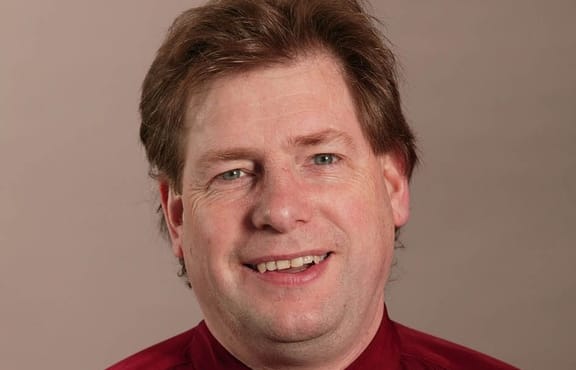Introduction by Michael Vinten:

Michael Vinten Photo: Supplied
I have felt for some time that we New Zealanders don’t know enough about our musical heritage, and while our musical history is reasonably well documented from after the Second World War, our knowledge from before that time is more limited. John Mansfield Thomson’s excellent Oxford History of New Zealand Music (1991), while a vital reference, is necessarily quite general in places about composers of this period. I also know from singers and singing teachers that the choice of New Zealand repertoire is mainly limited to songs produced in the last sixty or so years, but what about before that? Who were the composers writing until the middle of the century? Where did they come from? I am grateful to the Lilburn Trust for providing me with a Fellowship to do some exploring and try and answer these questions.
As a working definition of art-song, based on the definition of German ‘Lieder’, I have looked at songs where the importance of the piano accompaniment is equal to that of the singer, and the poet is as important as the composer. There is an expectation that Lieder/Art Song requires a higher level of technical skill on the part of the performers to execute the songs. This is different from the Victorian and Edwardian parlour song, which were songs composed for domestic use and home entertainment, and are usually based on sentimental poetry, or ‘sacred songs’. This type of music was the ‘pop’ music of its day.
Defining just who is a New Zealand composer pre-1950 can also be difficult and confusing. Alfred Hill, for example, was born and died in Australia, but moved to Wellington when he was seventeen. He never-the-less played an important role as a musician in New Zealand as both performer and composer. He studied in Leipzig, itself a break from tradition, most young musicians studied in London, and returned to New Zealand when his training was completed. He then helped establish professional musical standards and conditions around New Zealand before returning to Australia and its thriving musical scene in the 1920s frustrated by the limited opportunities on our shores. He was very interested in the Maori, and much like his contemporary the artist Charles Goldie, thought he was recording a dying race in his promotion, writing and composing of ‘Maori’ music, or at least as it was understood by European musicians at the time. Others, such as conductor Warwick Braithwaite, and cellist Arnold Trowell, left New Zealand when they were young, trained in Europe, and spent the majority of the rest of their life in Britain. Trowell never returned to New Zealand while Braithwaite returned to the country of his birth only in 1947 as a guest conductor of the National Orchestra. He, like Hill, wrote ‘Maori’ inspired music. However there were a number of composers who remained in New Zealand, or came from ‘abroad’, who contributed to the New Zealand music scene, men who mainly came as professional musicians and teachers to the churches and universities. Among the rediscovered composers are a number of women, most of whom were trained musicians and who were also teachers and accompanists. Their music is as interesting (often more so) and at least as competent as their male counterparts.
Deciding what New Zealand Art Song is, however, requires a bit of smudging of the definition, and in making a selection I have looked at literally hundreds of songs. There are major unpublished collections in the Alexander Turnbull Library, and I cannot thank the staff there, particularly Michael Brown, enough. Some collections proved to be too tempting to ignore. The songs of Paul Schramm are first rate and deserve to be more widely known and performed, and all of his extant songs for voice and piano will be published for the first time, and while there can be some debate about whether the songs written before he arrived on these shores strictly qualify as New Zealand Art Song, there is no doubting their quality, and it would seem a pity to omit them.
Finally, why pre-1950? That’s simpler to answer. In 1946 Douglas Lilburn delivered his talk ‘A Search for Tradition’ to the students at the first Cambridge Music School, held at St Peter’s School in Cambridge, Waikato. He challenged this group, who went on to become the composers of the next generation, to find a distinctively New Zealand voice, in the same way that New Zealand poets, writers and artists had already done. The conditions were ripe for music to follow suit. It wasn’t a call for a rejection of the past, but to define the future, but it never-the-less resulted in most earlier music being forgotten. Only the music of Alfred Hill retained any kind of recognition.

